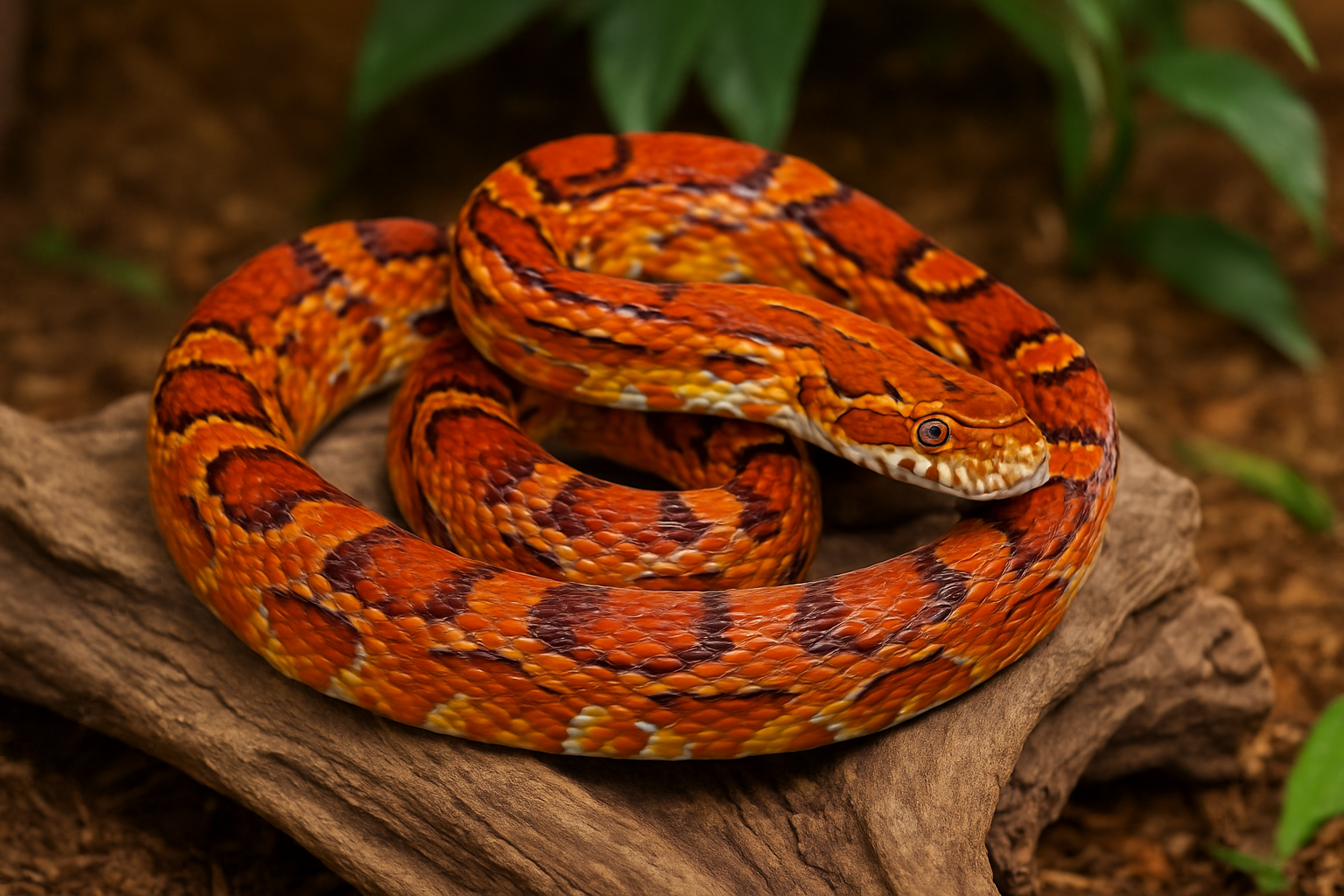

Corn Snake Diet & Feeding Guide: Nutrition in Captivity
Corn Snake Diet in the Wild
Corn snakes are one of the most common pet snakes and are naturally found in the southeastern United States. In the wild, their diet is varied, including rodents, birds, amphibians, and reptile eggs. This variety allows them to receive protein, fats, and micronutrients from multiple prey sources, as noted in the MSD Veterinary Manual’s overview of reptile nutrition.
Nutritional Basics of Corn Snakes
As obligate carnivores, corn snakes rely on high-protein diets with moderate fat. Protein supports growth and repair, while fat provides essential energy. Calcium and phosphorus maintain strong bones and muscle function, and vitamins such as A and B are important for healthy shedding, vision, and metabolism. When these nutrients are out of balance, issues such as poor sheds, lethargy, or obesity can develop. According to dvm360’s reptile nutrition review, vitamin E is particularly vulnerable to degradation in frozen prey over time.
Feeding Corn Snakes in Captivity
In captivity, most corn snakes are fed frozen rodents. While this practice is common, it often provides more fat than wild prey and may lack vitamin stability. Feeding schedules depend on age and body size. Juveniles generally require smaller meals every 5–7 days, while adults can be fed larger meals every 7–14 days. The portion should not exceed 1–1.5 times the diameter of the snake’s midsection. For new owners, this corn snake care guide offers a helpful introduction to feeding and husbandry basics.
Feeding Frequency for Corn Snakes
Corn snake feeding frequency should always reflect life stage and condition. Hatchlings and young juveniles benefit from small, frequent meals every 5–7 days, which fuel their rapid growth. Sub-adults and adults typically thrive on meals spaced every 7–10 days, though some larger adults do well on a 10–14 day cycle. Monitoring body weight and condition is essential to avoid both underfeeding and obesity. Keeping a simple feeding log helps owners stay consistent. For extra support, you can also download our free Colubrid Nutrition Care Sheet for quick reference.
Feeding Tips for Healthy Corn Snakes
If your corn snake refuses to eat, try adjusting the prey temperature, scenting the prey, or offering food in a stress-free environment. Feeding at dusk, when snakes are more active, can also increase success. These strategies, combined with a reliable corn snake feeding guide, can help owners troubleshoot common issues and maintain consistent routines. Consistency is important; overfeeding or offering prey that is too large can lead to regurgitation or obesity.
Keeping Your Corn Snake Happy and Healthy
Corn snakes remain healthy and active when their diets meet their nutritional needs for protein, fat, vitamins, and minerals. Careful attention to portion size, feeding frequency, and prey quality ensures long-term success in captivity. For more practical tips, explore our snake nutrition care sheet or visit our product page.
